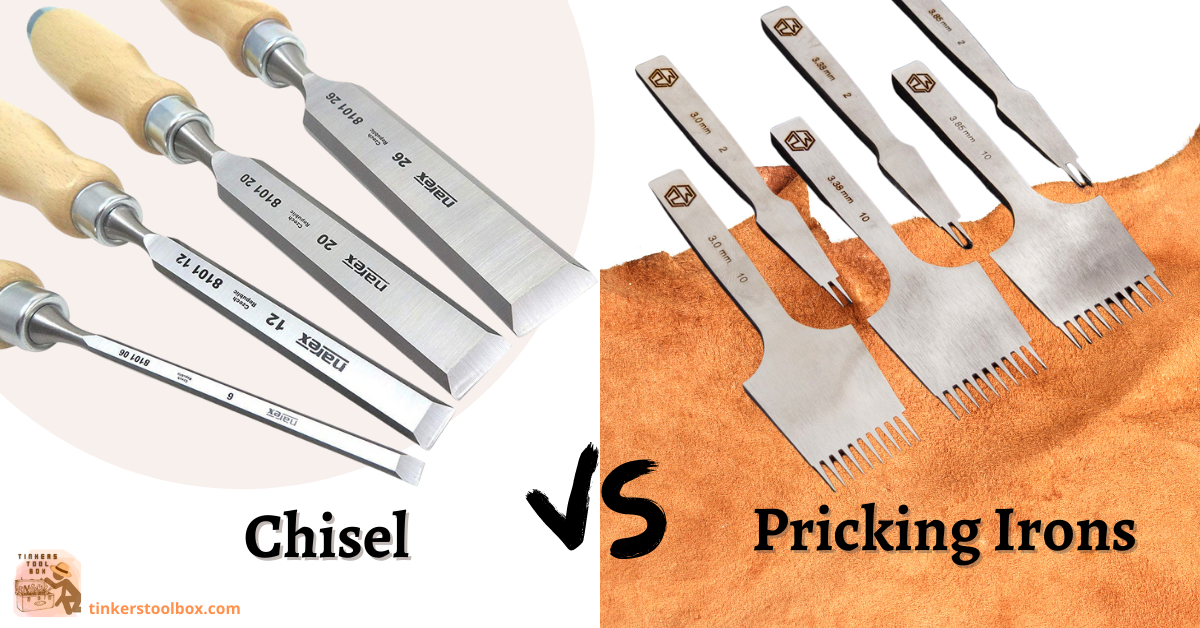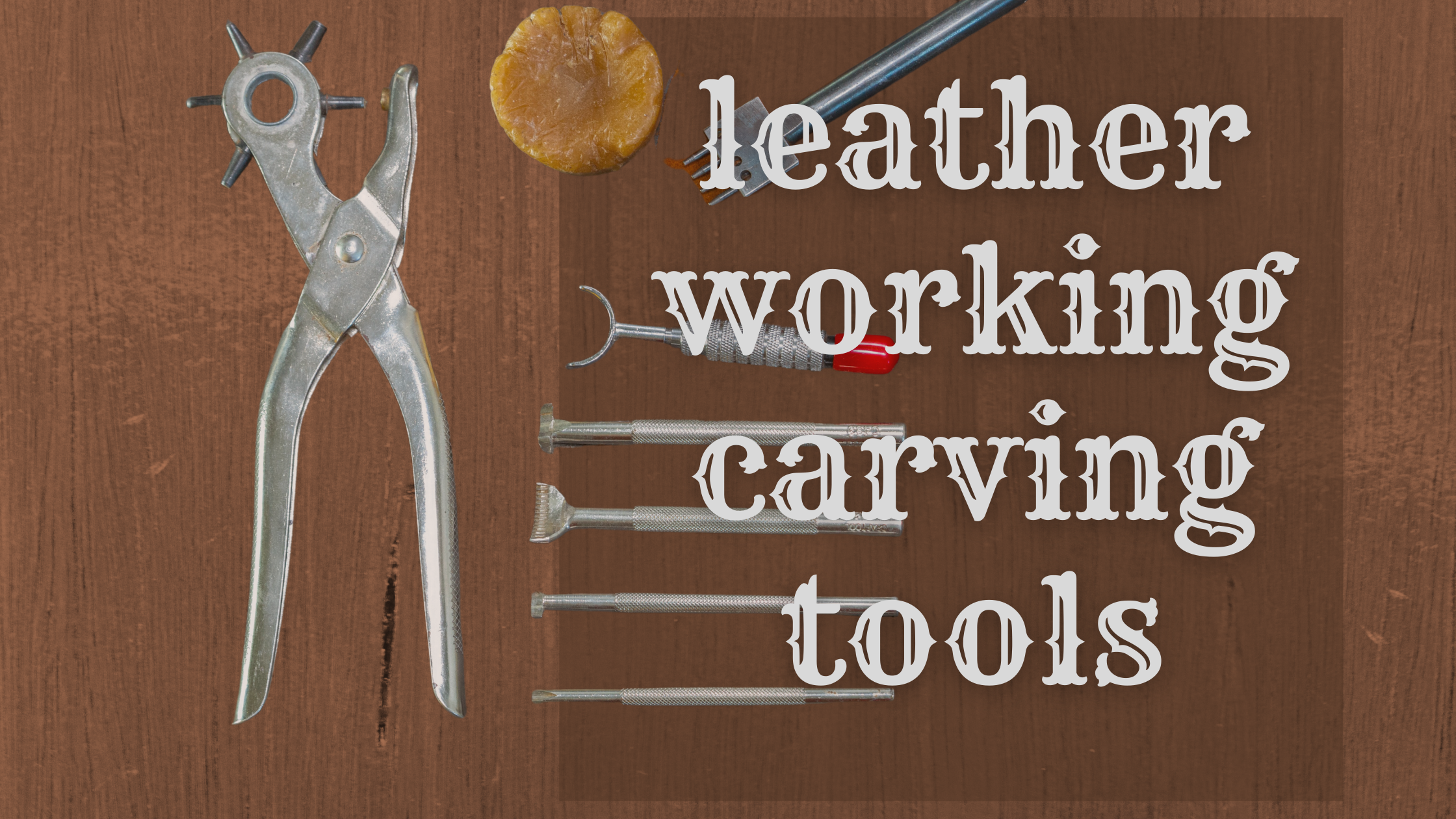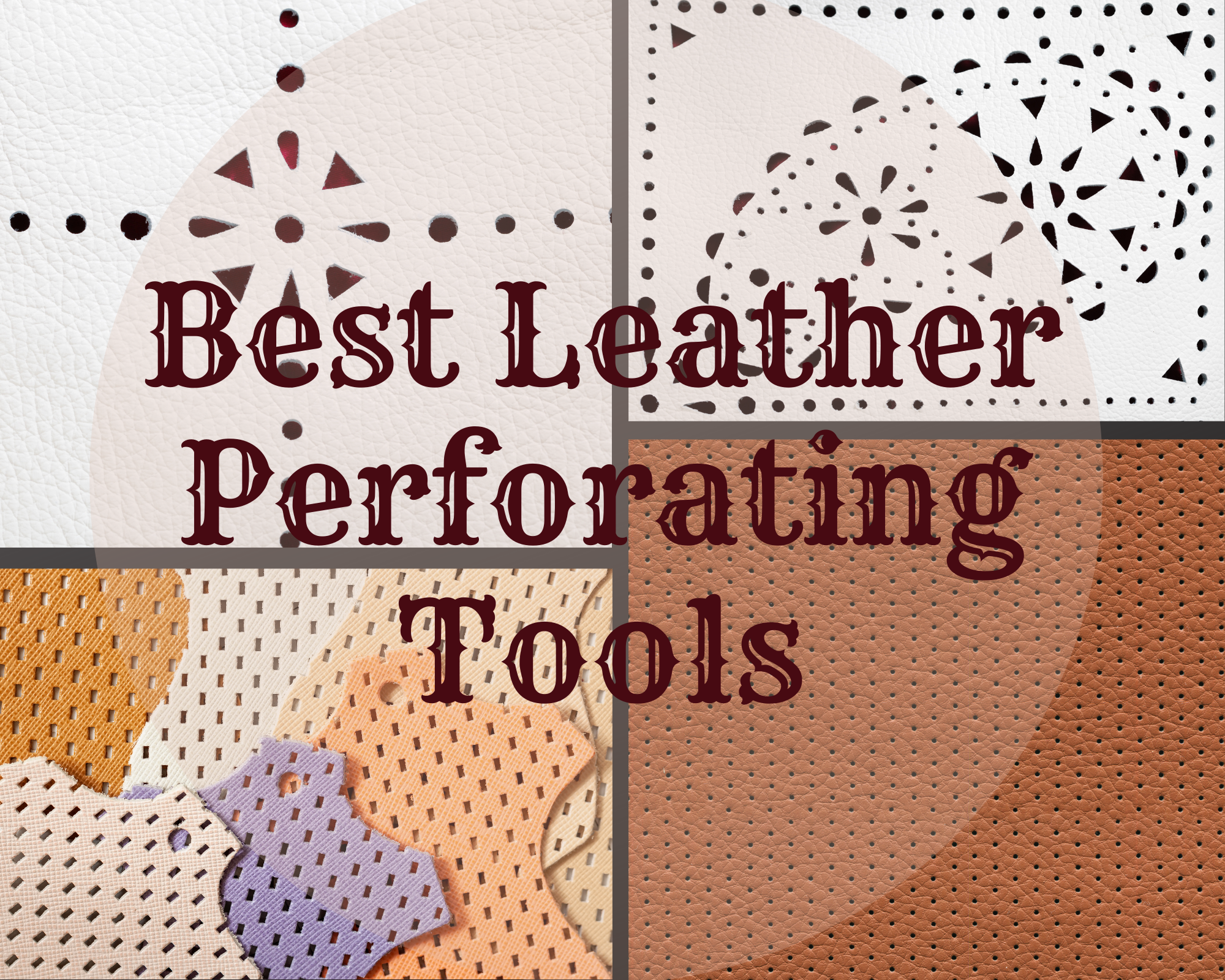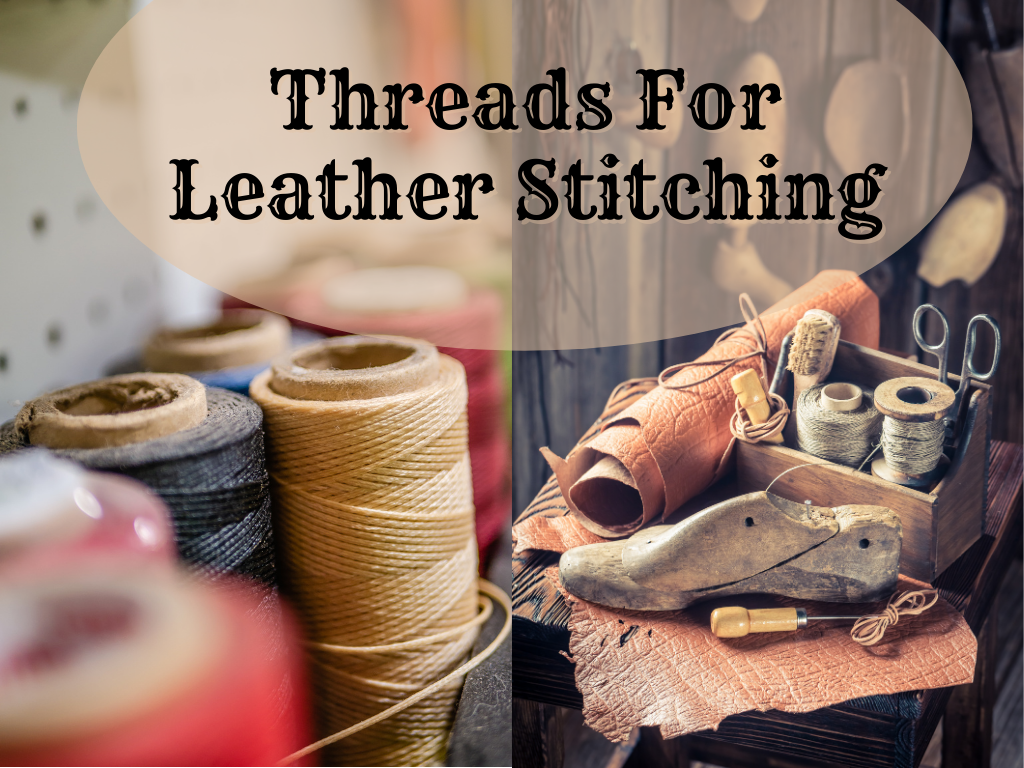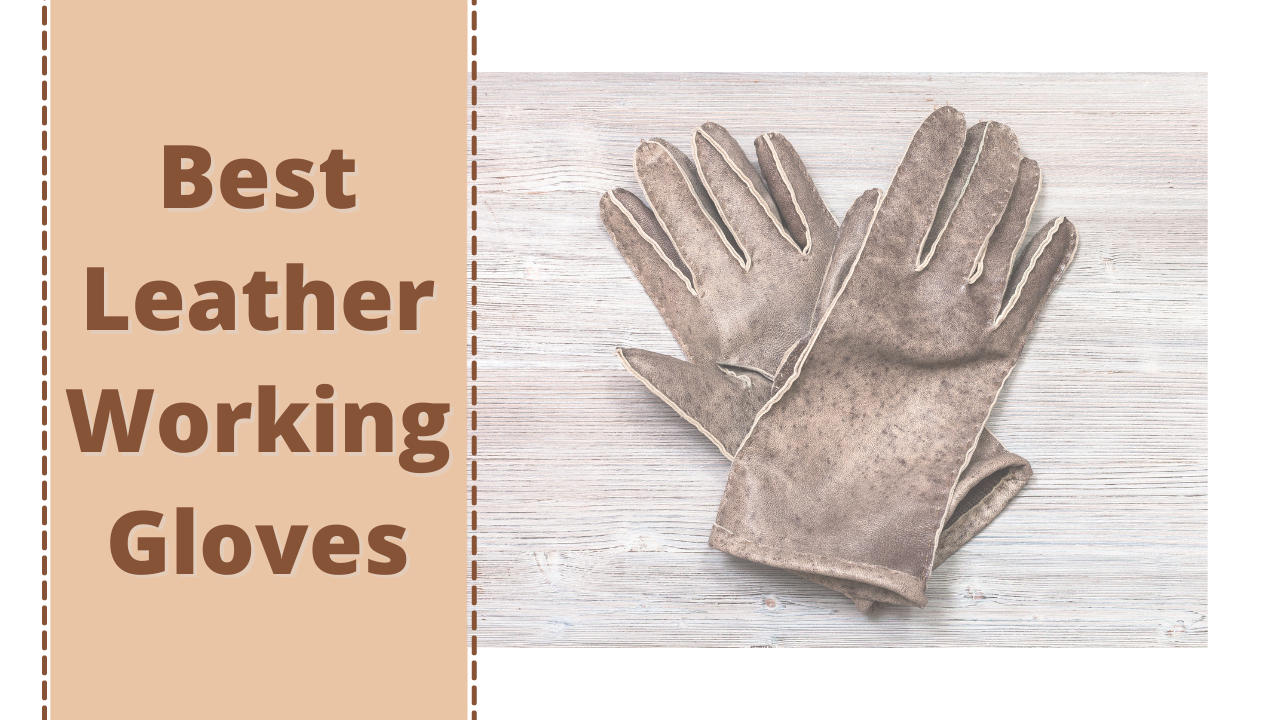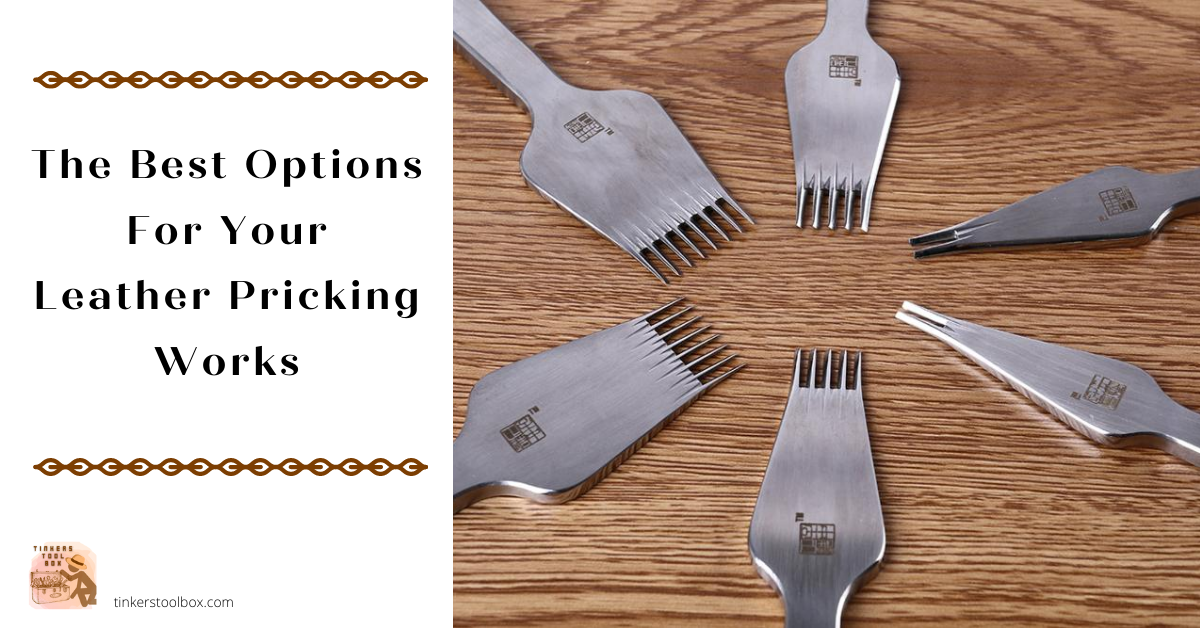Venturing to leatherwork is quite a challenge for a beginner. It starts from getting to know types of leather and various tools which have functions that overlap each other. Over so, it can be learned through time, and you can get a grasp of the different tools you can use in one way or more. Some essential tools that are confusing at first glance are chisel and pricking iron. Both these tools serve as aid before stitching, but each has a benefit over the other.
What is the difference between a chisel from a pricking iron? Chisel and pricking irons are tools for making a leather guide or mark, and both appear like a fork with prongs and a handle. The main difference is a chisel creates an actual hole on the leather than a spot which the pricking irons create.
My interest in leathercraft reached the next level when the COVID-19 pandemic strike. It made me even eager to pursue making leather projects one after the other because of being stuck at home. As I experienced, most beginner leatherworkers confuse marking tools like chisels and pricking irons because they look almost identical. If you also have this confusion, this article will discuss the main difference between these two tools and how to utilize them properly.
Pricking Iron At Its Superlative Function
A pricking iron is a simple tool yet has a valuable function in leathercraft. It is primarily used for making equally spaced stitches and provides an ease of stitching. There are many available options in the market that are perfect for your budget.
The Wonders It Offers
It is a tool that appears as a fork with varied prong numbers. It has different designs, sizes, and metals, mainly made with brass or stainless steel. Some pricking irons have teeth that are replaceable and removable. You can also purchase these teeth parts individually or as a set and sharpened individually or as a whole for the best output.
This tool produces different finished marks from circular, slanted to diamond-shapes that are equally spaced stitches in the leather. You can also generate different diameters from these varied shapes. It is a tool that needs regular sharpening and proper storage. Most importantly, pricking iron prepares the leather for easier saddle stitching paired with an awl. An awl is used after pricking marks in the leather to guide the needle and thread through the leather.
Getting The Pros
Using pricking irons provides equally spaced stitches that will eventually produce more appealing seams. It has many sizes to choose from depending on your need and preference. You can choose what type of mark finish you want to get. It is durable because of its good quality material body. You can also save money if you invest in stainless steel pricking iron. Some other types of steel used in pricking irons are heat-treated and coated to prevent them from rusting. There are also pricking irons that are hand-made with beautiful designs. On top of that, its marks look good on leather (additional structure).
Knowing the Cons
Most pricking irons are expensive if you are looking for a quality material that will last long. You can mark the leather with pricking iron but still needs to use an awl to create an actual hole which means additional expenses for beginners. You will also need experience and practice to maneuver pricking irons smoothly. It is crucial so that you can only apply enough force to the tool when making marks. You also need to consider various sizes of prongs to match needle sizes.
The Products to Check Out
There are different pricking irons for beginners that are at an affordable price depending on your preference. These are some of the perfect options for the best budget pricking irons, such as Yang Yao Leather Craftool Prong, KS Blade pricking irons, and Blanchard Pricking irons. If you have no budget issues, you can check out Japanese, European styles pricking irons, Lekoza pricking irons, and other choices in the market and on online shops. All these options are made of quality steel ideal for more extended use.
Chisel For A Budget – Wise Stitching Output
If your budget is limited yet wants to produce evenly spaced marks and achieve speedy stitching on leather, a stitching chisel can be the best buddy you can get. It’s affordable and is multifunctional for your leathercraft.
The Wonders It Offers
Chisels like pricking irons have prongs and a metal body. It is used to place stitch guides on the leather if you do manual stitches. You will also use a mallet to punch the chisel across the leather. If you use a chisel, you do not need to use an awl because it can create holes directly on the leather, making it the best and speedy precursor before saddle stitching. It is a tool used to make consistent and accurate stitches. Although, it will be tricky to use this, especially in going around sharp and curved corners.
It can be considered a great beginner tool. It’s budget-friendly and multi-purpose because it allows the user to make marks and holes simultaneously. The downside is that you will lack the experience of manipulating an awl on the leather.
Getting The Pros
It is economical and budget-friendly than pricking irons. Using a chisel is a quicker way to make holes or punches in the leather because it can directly penetrate the leather. It does not need a lot of practice to use because once you use it with a mallet, it will easily punch through. It makes saddle stitching very easy and speeds up the process of leather assembly. Chisels are sturdy and are easy to use by starters.
Knowing the Cons
The finish punches appear flat hence less appealing than marks made by pricking irons. It is made of low-quality that needs a lot of maintenance since it does not last long because of its cheap material. Also, you cannot develop your skill in using an awl.
The leather’s punches produce a frayed output on the other end, which will mean more effort in making smooth stitches. The holes created on the leather’s underside with chisels also seem to be a bit smaller than the front face.
Products to Check Out
There are many chisel options in the market, although usually made of low-quality steel, there are decent products available. You can check out Aiskaer Diamond Lacing Stitching Chisel Set with good steel material. The Citian Diamond Stitching Chisel is made of alloy with thinner sharp prongs easy to use. Tandy Leather 6 Prong Diamond Stitching Chisel, and Wuta Leather 2 Set Diamond Chisel. All these come at a budget price.
Aiming For The Best Marks and Holes
Leather is naturally stiff, and stitching chisel and pricking irons are the right tools to make marks and holes on leather. To get the best out of these tools, taking care and keeping it at its best state is a must.
Keeping The Best State Of Your Tool
Having the primary function of marking and piercing holes in leather, both chisel and pricking irons will need sharpening after prolonged use. You can sharpen these tools by using high grit of sandpaper or a stropping tool. Just rub it back and forth until both sides are sharpened. You can replace the blades for pricking irons if you prefer to.
For chisels, utmost care is needed because of the low metal quality. Its blade or tips are pointed that must be regularly sharpened to get the best holes. Also, the standard diamond tip of chisels makes it easier to sharpen the two sides.
These tools are also ideally covered with a sheath when not in use for safety and should be appropriately stored in a cool, dry place to avoid rust.
Match It Up With Skills
These tools both require excellent hand control to produce the best output. A leatherworker must have enough skills to control chisels and pricking irons for making marks on the leather. In using these tools, the leatherworks produced can be very appealing. You can also have the best stitching experience later on once all marks and holes are pre-made on the leather.
Conclusion
Leather tools are essential to get the best leatherworking experience. Using them properly makes your work faster and enjoyable. Stitching chisels and pricking irons are especially tools that make stitching easier than you should use. You need not worry about your stitches’ spaces and alignment because these simple tools got your back!
